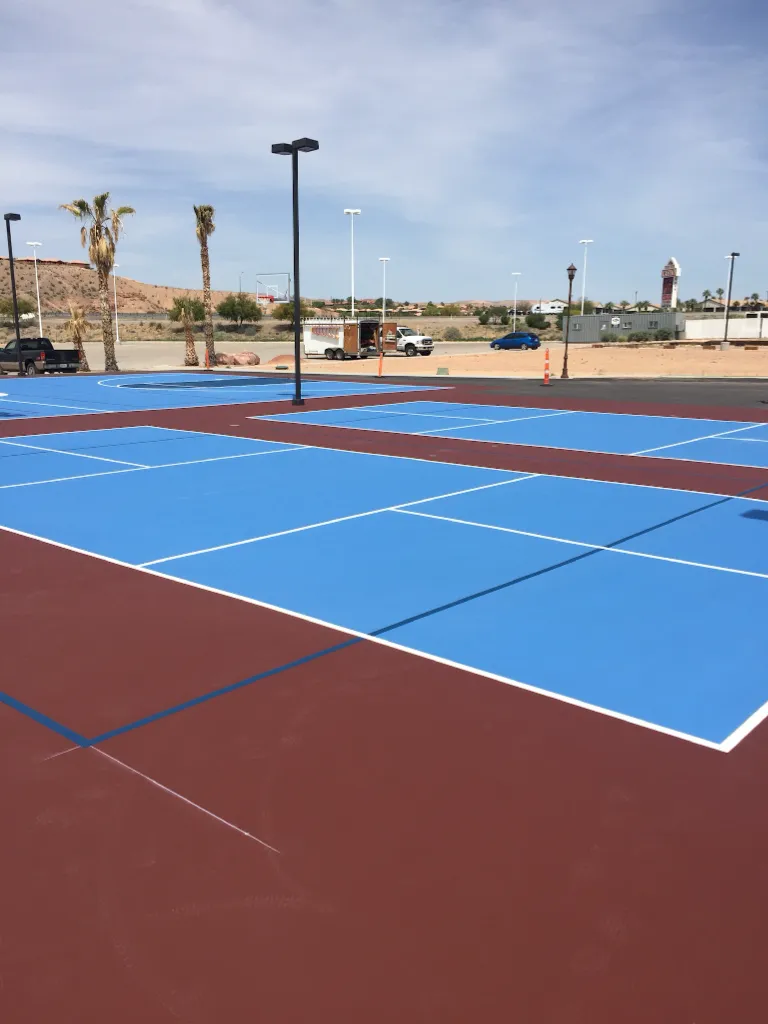Pickleball has quickly become one of the most popular sports for all ages, and its courts are a key element in delivering an enjoyable and safe playing experience. If you’re considering building a pickleball court or just curious about the materials used, understanding the construction and finishes is essential. Here’s a detailed guide to what pickleball courts are made of and why these materials matter.
1. Concrete or Asphalt Base
The foundation of a pickleball court is typically made of concrete or asphalt. These materials provide the strength and durability needed to support the court’s surface and ensure long-lasting performance. Here’s why these bases are ideal:
- Concrete: Known for its stability and ability to create a smooth, even surface, concrete is a popular choice for high-quality courts.
- Asphalt: Asphalt offers slightly more flexibility than concrete, making it a popular choice for outdoor courts since it can handle slight temperature fluctuations without cracking.
Both materials require proper grading and compaction to ensure a level playing area that meets official standards.
2. Acrylic Surface Coating
On top of the concrete or asphalt base, an acrylic surface coating is applied. This layer is crucial for several reasons:
- Traction: Acrylic coatings provide the necessary grip for players, reducing the risk of slipping.
- Ball Bounce: The coating ensures consistent ball bounce, which is essential for fair and enjoyable gameplay.
- Weather Resistance: Acrylic surfaces withstand outdoor elements, including UV rays, rain, and temperature changes.
Customize the acrylic layer with colors and markings to enhance the court’s aesthetic and functionality.
3. Cushioning Layers (Optional)
For added comfort, some courts include a cushioning layer beneath the acrylic surface. This layer helps reduce joint strain for players, making it an excellent option for facilities that cater to frequent or competitive play. Cushioning layers are typically made of rubberized materials that absorb impact and improve overall playability.
4. Perimeter Fencing
While not part of the court surface itself, fencing is an essential component of pickleball courts. It typically consists of metal or vinyl, keeping the ball within the playing area and enhancing safety for players and spectators.
5. Line Markings
They usually paint the lines on a pickleball court with high-quality acrylic paint to ensure durability and visibility.These lines include the baseline, non-volley zone (kitchen), and service areas, all of which are critical for gameplay.
6. Optional Accessories
You can add features like net systems, lighting, and windscreens to enhance the court’s functionality and appeal. Durable materials like steel, nylon, or polyester make these accessories ideal for withstanding outdoor conditions.
Why Materials Matter
The materials used to construct a pickleball court directly impact its performance, durability, and safety. High-quality materials ensure a smooth playing surface, consistent ball behavior, and resistance to weathering. When designed and built correctly, a pickleball court can provide years of enjoyment for players of all skill levels.
Build Your Dream Court with Stilson Outdoor Courts
At Stilson Outdoor Courts, we specialize in designing and constructing custom pickleball courts using the best materials and finishes. From durable concrete bases to weather-resistant acrylic coatings, we ensure your court meets the highest standards for quality and performance. Visit our Sport Court Finishes page to learn more about the options available for your project.
Ready to start building your pickleball court? Contact us today to bring your vision to life!

